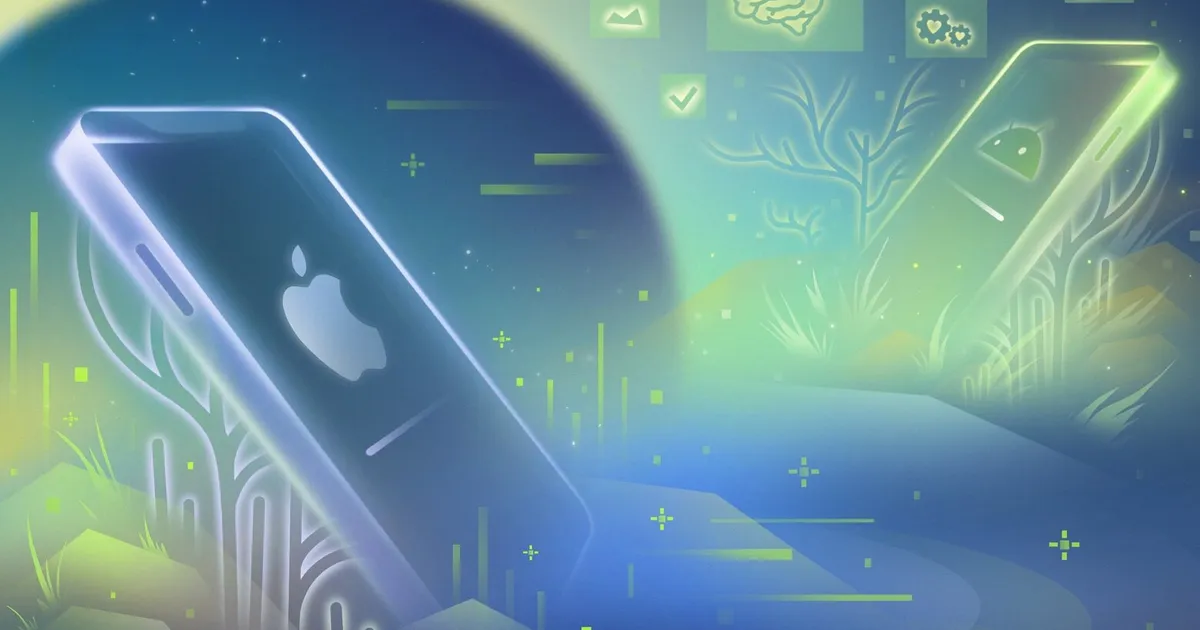
How Apple’s iOS 26 and Google’s Android 16 will change our phones
How did your country report this? Share your view in the comments.
Diverging Reports Breakdown
How Apple’s iOS 26 and Google’s Android 16 will change our phones
Apple’s next phone operating system includes a transparent aesthetic mimicking the look of glass. Google is doing the opposite with its newly released operating system, Android 16. With Google diving into AI, Android users will soon have phones that dig into their data to do lots of tasks. Apple is expanding on its AI, Apple Intelligence, which debuted last year, with features including automatic language translation and web search using data from a screenshot. The company has postponed the debut of a revamped Siri because of technical challenges, so the company is focusing on making its software interface look prettier. The new iPhone software uses AI to streamline tasks using a screenshot, for example, if you take a screenshot of a handbag, you can tap a button to do a search for similar-looking handbags. It also lets users draw circles around objects to do image-based searches.
Apple’s next phone operating system arriving this fall, iOS 26, includes a transparent aesthetic mimicking the look of glass, and making apps and buttons blend in with screen content. Google is doing the opposite with its newly released operating system, Android 16, emphasizing brighter, punchier colors.
Google is also leaning heavily into integrating Gemini, its AI chatbot, to automate tasks like writing emails, editing photos and creating shopping lists. In contrast, Apple has released a small set of AI features and postponed the debut of a revamped Siri because of technical challenges, so the company is focusing on making its software interface look prettier.
What this means is that your technology experience may differ drastically depending on which type of phone you buy next. With Google diving into AI, Android users will soon have phones that dig into their data to do lots of tasks. Apple phone users will get some nice-looking software with extra polish, which is more of the same.
Here are highlights of what’s changing with iOS 26 and Android 16.
Advertising
iPhone’s apps are fading away, and Android is looking spicier
When Apple unveiled iOS 26 — giving its software a new numbering scheme based on the fiscal year it becomes available — at a conference last month, it announced a new software interface it calls Liquid Glass, referring to a translucent aesthetic that mimics the look of glass. For instance, an app icon or a button could change its appearance to adapt to the lighting and colors of the photograph behind it.
In contrast, at Google’s software conference in May, the company unveiled the new design for Android 16 that makes your phone screen look more like pop art. You can choose a color theme to change the look of the software interface.
Yet both of these design overhauls feel like a distraction from the real transformation happening to our phones, which is being driven by AI.
Google is trying to make Gemini Android’s killer app
Like its predecessor, Android 16 features Gemini, which users can interact with through voice or text to streamline tasks on phones.
In recent years, Google expanded Gemini to control various pieces of software, including its note-taking app, Google Maps and YouTube. Android users can hold the phone’s power button to summon Gemini and ask it to do things such as make a grocery list, see how long it takes to walk to a destination, or generate the ingredients from a cooking video being watched on YouTube.
Advertising
Apple is still playing catch-up in AI
In iOS 26, Apple is expanding on its AI, Apple Intelligence, which debuted last year, with features including automatic language translation and web search using data from a screenshot — tools Android users have had for a while.
The real-time translations work inside some of Apple’s communications apps, including messages and FaceTime. On a FaceTime call with a relative speaking his or her native tongue, you can see a translated caption in a bubble on the screen, for example. (Google released a similar tool in 2021.)
The new iPhone software uses AI to streamline tasks using a screenshot. For example, if you take a screenshot of a handbag, you can tap a button to do a search for similar-looking handbags. (That’s like Google’s Circle to Search tool, which lets Android users draw circles around objects to do image-based searches. Many users have called the feature a gimmick because it is seldom useful.)
As for Siri, Apple was to release a version with AI to rival Google’s Gemini this spring, but that’s been postponed after internal testing found it was inaccurate on nearly a third of requests. Users can talk to the old-school Siri and redirect some requests to OpenAI’s popular chatbot, ChatGPT.
